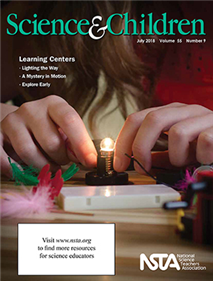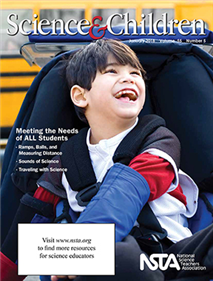All Learning Progression resources
Journal Article
Nonideal enrollment of nonbiology majors into biology majors courses serves as an impediment to academic success and negatively impacts rates of college course completion. In this Institutional Review Board (IRB)-approved investigation, we examine ...
By Farshad Tamari, Mary Dawson, and Ivan Shun Ho
Blog Post
How PLCs Helped Move Us Toward Equitable High School Assessment Practices
My colleagues and I began using units intentionally designed for the NGSS for biology in early 2017. We started with a high-quality unit evaluated by my colleagues on the Science Peer Review Panel, and eventually used a full program from the unit’s...
By Holly Hereau
Journal Article
Support scientific development among young children with learning centers....
Journal Article
Science 101: How Do We Best Teach and Learn Science Concepts?
This column provides background science information for elementary teachers. In this issue the author discusses the method he uses to explain a science concept or concepts....
Blog Post
Global Thinking Inside and Outside the Classroom
Dynamic Equilibrium. These two words represent what is essential in teaching Earth science: the idea that forces are constantly working against one another, but often do so in ways that nearly counteract one another....
By Cindy Workosky
NSTA Press Book
Preparing Teachers for Three-Dimensional Instruction
It’s not enough for teachers to read through the Next Generation Science Standards (NGSS) and correlate their content to the established curriculum. Teachers must prepare to make the vision of the NGSS come alive in their classrooms. Editor Jack Rh...
Blog Post
Seeds of Science, Roots of Reading Program Helps Students Develop Explanations
The Next Generation Science Standards (NGSS) encourage three-dimensional thinking in students. 3-D thinking, and the process of developing scientific explanations, are curiosity-driven: They involve wondering, posing questions, and making observation...
By Jim McDonald
Journal Article
Formative Assessment Probes: Uncovering Students’ Ideas About Inherited Traits
This column focuses on promoting learning through assessment. This month’s issue discusses the “Baby Mice” probe, which is designed for middle and high school students, but it can be used with grades 3–5 to elicit students’ initial ideas ab...
Journal Article
Methods and Strategies: Teaching the Nature of Science to Elementary Students
This column provides ideas and techniques to enhance your science teaching. This month’s issue shares activities so that elementary students can learn about Nature of Science. When effectively integrated into inquiry investigations through proper s...
Blog Post
Gravitational Interactions and 3-D Learning in Middle School
I recently embarked on a journey with K–8 teachers in Vermont to learn how to be intentional about planning for three-dimensional (3-D) learning in the classroom....
By Cindy Workosky





